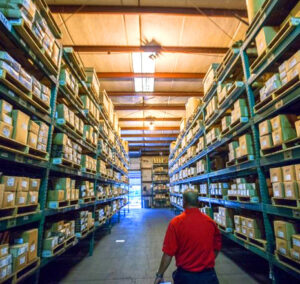What Efficiencies Can Be Achieved
Would single-sourcing help to make the purchasing, sales, manufacturing, distribution and/ or accounting processes more efficient for one or both parties? If so, the economic incentives for entering a single-source arrangement can be compelling. How well these efficiencies can be structured for the mutual benefit of both parties can determine the long-term efficacy of the single-source relationship. These efficiencies can lead to benefits such as lower costs, increased profitability, and reduced overhead for one or both parties.
Benefits vs. Downsides
Do the benefits of the proposed single-source solution outweigh the potential downsides? An in-depth analysis allows the procurement team to compare the benefits and potential downsides of proposed single-source relationship, in order to make a determination based on all variables. Does the vendor offer higher quality products, or superior lead times, that are critical to the buyer’s success in the marketplace? Do they offer innovative logistics solutions that reduce the costs of going to market? If the benefits offered by the supplier represent a significant upside to the buying organization, compared to potential downsides, then a single-source approach to procurement may be the right answer.
Supplier Trouble Shooting and Backup Plans
Does the vendor have trouble-shooting plans in place in case of emergency? Can production be shifted to another facility in the event of a disruption? Does the vendor have access to multiple sub-suppliers if the supply of manufacturing materials is disrupted? Are backup plans in place to guard against potential outages? By understanding the ins-and-outs of the supplier’s operations, and engaging in the necessary dialog to ascertain the details, the buying organization can help protect itself, and ensure proper due diligence has been conducted to lay the groundwork for success.
Size of the Business & Services Required
Is the business large enough to give the supplier the ability to realize efficiencies that can be passed on to the buying organization? Is the business too large to make single-sourcing feasible? By analyzing the production capacities of the supplier, both parties can ensure the single-source approach can be balanced, practical and economically workable for both parties.
In addition, if specific or specialized services will be required of the potential vendor(s), this will also be a major factor in evaluating the feasibility of a single-source option. For example, if special packing, specialized distribution, customized paperwork or extraordinary delivery requirements will be part of the requirements, potential vendors must be screened accordingly. Are Vendor Managed Inventory (VMI) services required? Are special testing procedures on critical parts necessary for the items produced? Before considering whether to single-source or multi-source the business between two or more suppliers, it is important to define the specific services that are required on each product that is to be delivered, and evaluate the ability of each supplier to meet the requirements. This will help determine which suppliers are qualified to handle the business, and whether single-source or multi-source contracting is the most appropriate option.
Buyer-side Contingency Plans
Can your business find a backup vendor in case of emergency? If so, the risk of entering a single-source agreement is minimized. If a long lead-time could be required to bring a new supplier online, then a single-source purchasing arrangement may not be to your company’s long-term advantage. A more prudent approach might be to cultivate supplier relationships with more than one provider.
Other Considerations
Other considerations include the presence of prior commitments on the part of the buyer or prospective supplier, successful past relationships between the prospective parties or other third parties, or the existence of ongoing relationships between the parties and/or competitive organizations.

 In addition to providing the potential to negotiate lower costs and better purchasing terms, single sourcing can be justified when one supplier offers unique capabilities, or higher quality, or when the order is too small to divide among multiple suppliers.
In addition to providing the potential to negotiate lower costs and better purchasing terms, single sourcing can be justified when one supplier offers unique capabilities, or higher quality, or when the order is too small to divide among multiple suppliers. Considerations When Contemplating Single-Sourcing
Considerations When Contemplating Single-Sourcing All-Pro and Single-Sourcing
All-Pro and Single-Sourcing As a multi-source supplier, All-Pro can support buying departments with price and product checks and balances. Bringing an in-depth understanding of the operation and economics of the fastener business – with experience across virtually every industry – All-Pro Fasteners knows the quality and cost of fastener products. As a multi-source supplier, we can sup port our customer partners as a resource able to provide trusted checks and balances on the products and services they require.
As a multi-source supplier, All-Pro can support buying departments with price and product checks and balances. Bringing an in-depth understanding of the operation and economics of the fastener business – with experience across virtually every industry – All-Pro Fasteners knows the quality and cost of fastener products. As a multi-source supplier, we can sup port our customer partners as a resource able to provide trusted checks and balances on the products and services they require.